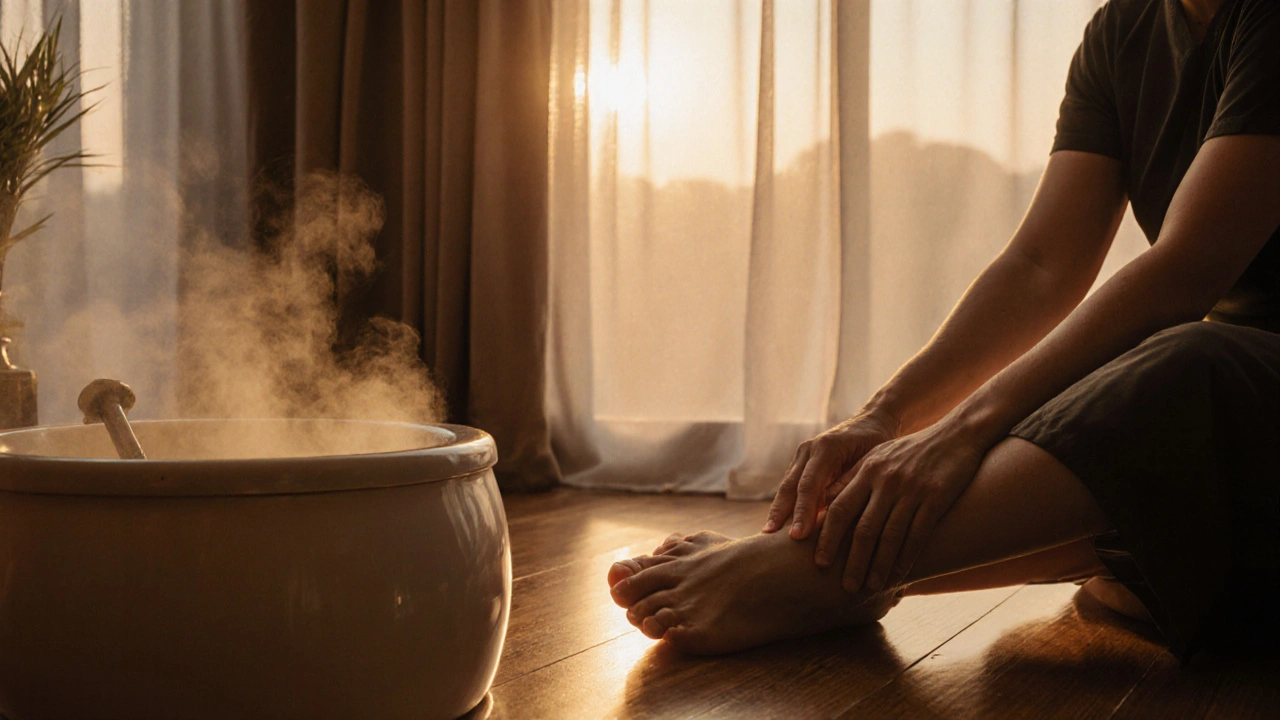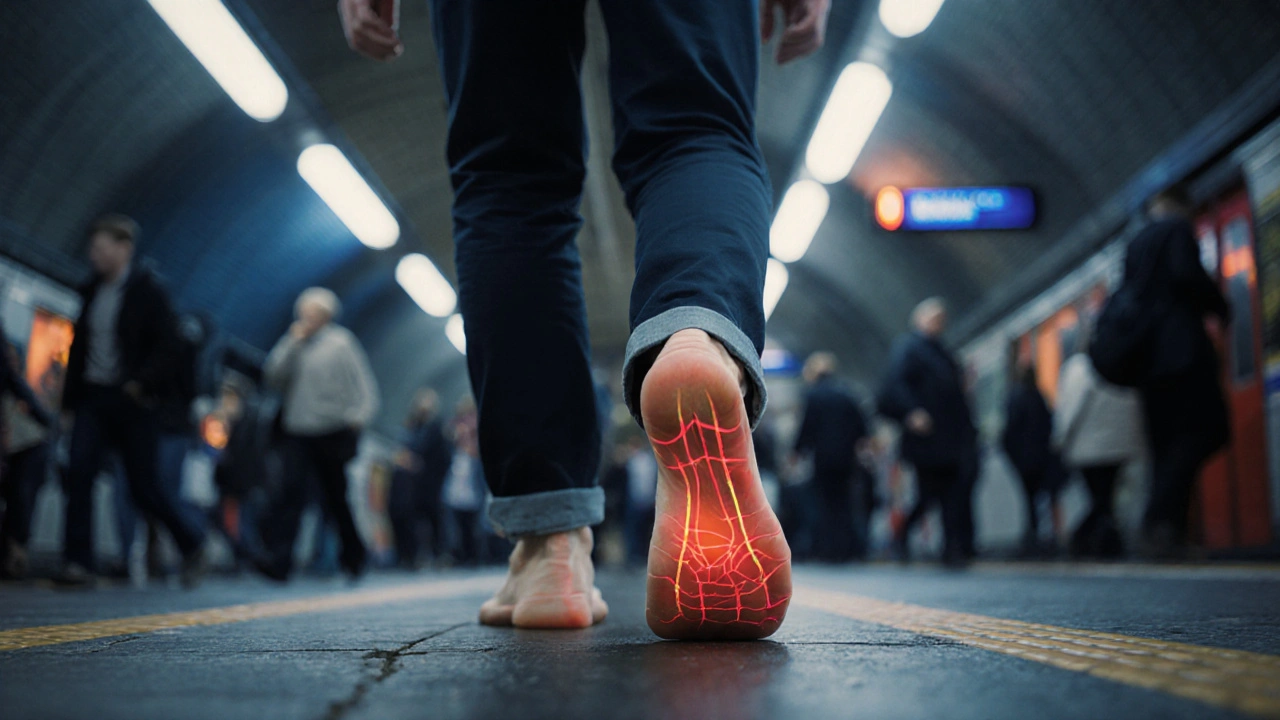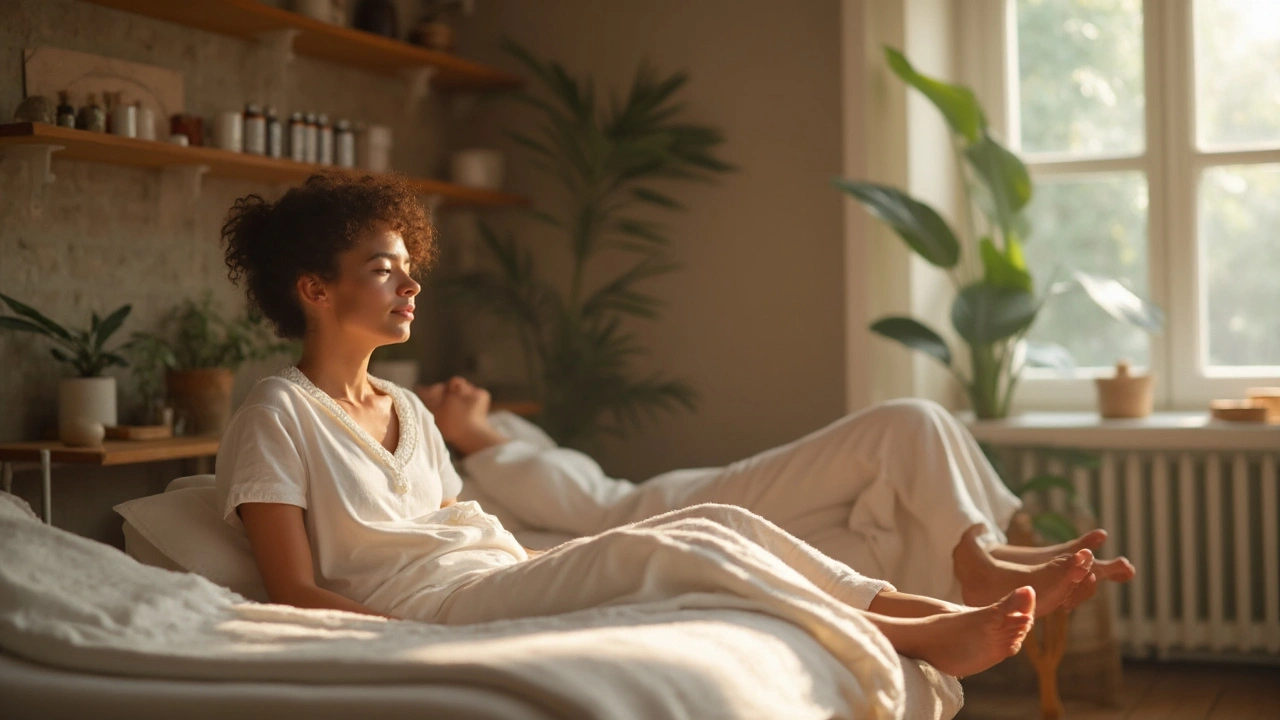Discover how reflexology enhances body massage by targeting nerve zones linked to organs and systems, reducing stress, and improving relaxation. Learn how it works, who benefits most, and where to find it in London.
Reflexology in London – What You Need to Know
If you’ve ever felt tension in your feet after a long day, reflexology might be the answer. It’s a simple hands‑on technique that uses pressure points on the feet, hands, or ears to affect other parts of the body. Think of it as a map where each spot talks to a different organ or system. By stimulating those spots, you can boost circulation, calm nerves, and ease aches without taking a pill.
How Reflexology Actually Works
During a session, a therapist applies firm but gentle pressure to specific zones on your feet. Those zones correspond to areas like the spine, liver, lungs, and even the mind. The idea is that a bit of pressure can unblock energy pathways and improve the flow of blood. Most people feel a warm, tingling sensation as the therapist works, and many report a deep sense of relaxation right after.
The science behind it isn’t magical; it’s about stimulating nerves and improving local blood flow. That can reduce inflammation and calm the nervous system. If you’ve tried yoga or meditation, you’ll notice a similar calm, but reflexology targets the body more directly. It’s also a low‑impact option for people who can’t do strenuous exercise.
Finding a Good Reflexology Therapist in Central London
London is packed with wellness studios, but not every practitioner is the right fit. Start by checking credentials – look for a therapist trained with a recognized reflexology association. A quick chat before booking can reveal how they tailor sessions to your needs, whether you want a short “energy boost” or a longer, full‑body session.
Location matters too. If you work in the City, a therapist near the underground can save you commute time. Many clinics now offer outcall services, bringing the treatment to your home or office. That’s handy if you want privacy or have limited mobility.
Pricing in London varies. A 30‑minute session might cost around £40‑£50, while a full hour can run £80‑£100. Some places give a discount for regular bookings, so ask about packages if you plan to make it a weekly habit. Remember, the cheapest option isn’t always the best – look for reviews that mention professionalism, cleanliness, and a calming atmosphere.
When you arrive, wear comfortable clothing and bring socks if you prefer. The therapist will ask about any health concerns, so be honest about injuries or conditions. Reflexology is generally safe, but it shouldn’t be used as a sole treatment for serious medical issues.
After the session, drink plenty of water. The pressure you received helps move toxins out of the tissues, and staying hydrated speeds up that process. You might feel a bit light‑headed right after, which is normal – just take a few minutes to sit quietly before getting up.
Integrating reflexology with other massage styles can amplify benefits. Pair a foot reflexology session with a short head massage, and you’ll notice a bigger drop in stress levels. Many of our readers combine it with Swedish or deep‑tissue massages for a full‑body wellness routine.
Bottom line: reflexology is an accessible, non‑invasive way to support your health, especially if you spend a lot of time on your feet in the city. Keep an eye on therapist credentials, book a convenient location, and treat the experience as a regular part of your self‑care plan.
Learn how foot massage improves blood flow, reduces swelling, and supports heart health. Get tips on techniques, finding London therapists, pricing, safety, and FAQs.
Discover how head massage and reflexology work together to melt away stress, ease tension, and improve your well-being. This article lays out what makes both treatments special, how they benefit your body and mind, and what to expect when you book a combo session. Find out tips for choosing top-notch local providers, key safety advice, and side-by-side comparisons to help you pick the right treatment for your needs. Frequently asked questions are answered, and you'll get clear, simple advice on how to get started. Get ready for clear answers, practical info, and some pro tips to make the most of your next session.



